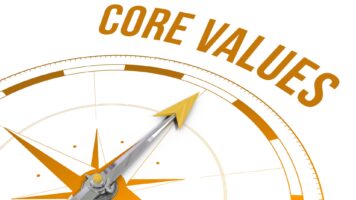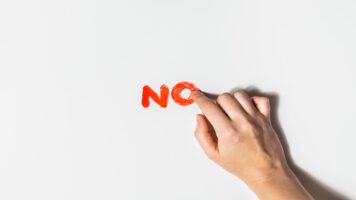How to Avoid 3 Big Mistakes About Being Biased

Personal Development
September 10, 2015
Jane Perdue
Executive Director, The Jane Group
Topics
Bias, Decisions, LeadershipGo ahead - second guess yourself.
Done intentionally and constructively, not self-destructively, giving your actions one last loving look before moving forward is a good thing - for you, your colleagues, company, community, and workplace culture.
That thoughtful pause can assure you’re not leaving discrimination in your wake.
“No way,” you exclaim. “I’m not biased, so I couldn’t possibly discriminate.” Therein lies the problem.
-
Bias Mistake #1: Believing We’re Not Biased - Many of us work hard to be good, unbiased people. Sadly, despite our good intentions, that’s an unreachable goal. We can’t avoid being biased—our brains push us in that direction.
Research by psychologist Dr. Mahzarin Banaji reveals: "that the human brain is hard-wired to make quick decisions that draw on a variety of assumptions and experiences without us even knowing it is doing so.”
Our unconscious assumptions influence, shape, and bias what data we take in, how we process that data, and how we act on it. If we believe people who take all their vacation time are less dedicated than we are, our unconscious bias may manifest itself as a deep-seated resistance to their ideas: They aren’t committed, so how can their input have value?
“Hidden biases are neither a moral failing nor a sign of a bad person. So it isn’t a matter of being ashamed or embarrassed as long as we work to identify and overcome our unconscious attitudes and act differently. It starts with making the unconscious conscious.”~ Zabeen Hirju, CHRO, RBCSolution: Be mindful of those quick decisions—the assumptions driving them may be flawed. Check with others for their perspective as it is often hard for us to see our own biases.
-
Bias Mistake #2: Believing That Training Eliminates Bias - Eliminate is a big, bold word that falls short when it comes to bias. Biases can be managed and minimized but total elimination is highly unlikely given the brain thing that’s going on.
When we meet someone, our brains use visual and sometimes irrelevant stimuli to categorize the person as being like us or being different. Research by Meagan M. Patterson and Rebecca S. Bigler showed that something as simple as wearing a red or blue tee shirt served as an indicator for young children that kids wearing a different colored shirt were one of them, not one of us.
Our mental categories of good and bad, right and wrong, same and different, etc., occur unconsciously. They’re based on past experiences and cultural conditioning and may unintentionally prompt us to subtly treat the them differently than those who are like us.
Some women and men prefer to work collaboratively. If they work in a culture where competitiveness is a prized attribute, they’re likely to be labeled as not having what it takes to succeed. Because the preference for competitiveness is ingrained and viewed as a positive, training about not discriminating won’t help because the inclination isn’t seen as bias but rather as just fitting in.
“An important aspect of leadership is to turn around and see who is following you. If those who follow you all look and behave just like you, something is wrong. That is simply not representative of our highly diverse society.”~ ~Fiona Macfarlane, Chief Inclusiveness Officer, EY CanadaSolution: Acknowledge we all have blind spots and proactively look for them. Accept as a fundamental premise that different isn’t wrong, just different.
-
Bias mistake #3: Believing That An Outlook Isn’t Biased Because The Data Supports It - Scientist Peter Senge wrote about how success messes with our ability to reason. We fall victim to confirmation bias, which is seeing only the facts that support our position. We rationalize or deny evidence to the contrary.
Suppose our startup is wildly successful, and meetings there are loud, raucous affairs where people talk all over one another. As such, we may view the modest, reserved applicant as unqualified. Groupthink says it’s brash extroverts that make the company thrive. Psychologist Jonathan Haidt notes that our minds “unite us into teams, divide us against other teams, and blind us to the truth.”
Solution: Learn to balance a leader’s ability to act and advocate with listening, inquiring, and acquiring.
“A human being is a deciding being. Between stimulus and response there is a space. In that space is our power to choose our response. In our response lies our growth and our freedom.”~ Viktor Frankl, Psychiatrist
For sure, it’s a crazy, busy world where time is a precious commodity. We’re pushed, encouraged even, to think and act fast, believing there’s no time for the second look. Resist that impulse. Taking a few uncomfortable minutes to hit the pause button and look with beginner’s eyes pays big dividends in both economics and engagement.





Hi, Jane – fascinating post about a subject I dearly love:)
Initial response: Only THREE?
Thinking response:
Bias is a human condition and identifying our biases is essential to reducing or eliminating their negative impacts. This is a timely issue whenever it comes up, but especially so during the political season and during times of social upheaval and change. For individuals, becoming aware of and countering our personal biases is a life-long journey, methinks.
Simply knowing about biases and how they work is not enough. We all probably know quite a bit about the dangers of smoking tobacco or texting while driving, but knowing in and of itself is not enough to create behavior change.
Over the years, I have taught, trained, facilitated, and coached … and I can say with certainty that the three points you raise here are real and important.
I make a distinction between biases, prejudices, stereotypes, and discrimination which might be useful here:
Bias: What you said above. How we think about something which results in a preference.
Prejudice: The attachment of positive or negative quality to that bias, usually based on a very small example or portion of a group
Stereotype: When you apply that positive or negative quality to an entire group without exception.
Discrimination: When you act negatively or positively toward that group based on the above.
I use these distinctions to help people dig deeper around their own biases and where those biases may lead. Including the idea that both positive and negative results can occur, all based on generalizations which may or may not be true, is often a real eye-opener:)
BTW, ending with a Viktor Frankl quote always results in a gold star bonus:).
John
John,
Your comment “only 3?” made me smile! Thank you for that and for all your apt observations!
The list of hundreds and hundreds of biases is almost overwhelming…hence the smaller chunk! Those in my workshops don’t get off quite so easily **smile**
I’m guessing that we teach similar content…woohoo! I use the same approach, from bias to discrimination, noting it as a slippery slope.
With a smile,
Jane
I’m a fan of Kahneman’s book Thinking, Fast and Slow. How about you?
Hi, Jane:)
I actually have not yet read Kahneman’s book all the way through in depth, althought I have dipped into it during some very rare “down time”. I also seem to run into the ideas in the book through citations and mentions by people I trust (see above message for example). What I know of the book is all good and he seems to have nicely gathered and summarized much of what we have learned over the past decades about our cognitive processes around bias.
My kind of book … guess it needs to bump up the reading list and become a priority:)
Thanks for reminding me about this great resource.
John
Guess I need to bump